The Complete History of Splatoon: Nintendo's Standout Wii U Classic
7 years of inking
Before the launch of the Switch, it wouldn’t exactly be an understatement to say that Nintendo wasn’t in the best spot. After the massive success of the Wii, no one could have expected its successor, the Wii U, to perform the way it did. While poor marketing is generally considered to be the reason for the lackluster sales, something had to have sold the system for those who bought it. For me and many others, that reason was Splatoon.
Splatoon started its development shortly after the launch of the Wii U. A group of younger talent all involved with Wii U projects ranging from the Wii U menu to games like Nintendo Land or New Super Mario Bros. U got together with one goal in mind: make something new. They didn’t want to make another Mario or Zelda, they wanted to make a game set in a genre outside the norm for Nintendo. After six months and over 70 different ideas, the first prototype for what we now know as Splatoon was born.
It was important for the team to make a game that was fun first, with character design coming second. Because of this, the early prototypes for Splatoon didn’t include the all-too-familiar inklings we know and love. Instead, each playable character was a simple cube with a little nose to shoot ink from. One team was white, while the other was black. This prototype was actually quite advanced, featuring full 4v4 online multiplayer. In fact, this prototype was a major factor in why we got Splatoon out of all of those ideas.
One feature that was not kept from the prototype involved the map being on the main TV screen while the gameplay was on the gamepad. While initially this may sound like a strange decision, it actually birthed the ink hiding mechanic that’s integral to Splatoon. Having such a big view of the map allowed you to see where every member of the enemy team was at all times. When the characters were simple cubes, it was easy to have them hide in their own ink, as they were the same color and could not be seen. The issue arose when converting the cubes into something a little more sellable. They knew they wanted humanoid creatures, but that design stood out too much on the map.
There was some discussion to maybe use Mario from Super Mario Sunshine due to its similar use of ink, but this was eventually decided against in order to make something wholly unique. This led to the next big idea; rabbits.
Rabbits are white to begin with, so it would be easy to tell if they were inked. They’ve got long ears that would sway when the rabbits moved, so you could see the characters moving when viewed from above. It would also be easy to tell which direction the rabbits were facing by the direction of the ears.
While people admittedly found the demo they had created fun, it didn’t fully click. Eventually, they focused in on what people were having issues with: the rabbits. People couldn’t understand why rabbits would be shooting ink and hiding in it…it just didn’t make sense. Because of this, they started looking for the “why” in these characters. Why are they shooting ink? The easiest answer came in changing the character to a squid.
This change to squids gave them a character that could logically switch from swimming to shooting. When the squid needed to shoot, they could pop out of the ink in humanoid form, but when they needed to hide, they could just as easily slip in as a squid. This approach also paved the wave for inking walls, as now the squids could swim up them. From here, they started designing both the humanoid and squid forms, with early designs of the inklings looking much different than what we know today.
Once they had finalized the character designs, worldbuilding and game mechanics came next. Remember the 70 ideas from earlier? Not all of those went to waste, with many being integrated into the final game. The setting and themes of the game were also finalized in this period. The fashion, music, and general cool and rebellious vibes Splatoon is known for were all decided very early in development.
E3 2014 was our first look at Splatoon, revealed in that year’s Nintendo Direct with a cinematic of an Inking Girl and Boy engaging in some turf war, before showing us what Splatoon was all about. This same cinematic was later referenced in the Smash Ultimate Reveal Trailer. Looking back on gameplay in the trailer, it’s clear just how early on in development that trailer was made. Only two weapons were shown, one being the Splatershot, and the other being the Splatroller. Along with the reveal trailer, Nintendo had a fully playable demo on the E3 show floor, which received overwhelmingly positive reactions.
According to the dev team, only 10% of the game was completed when this demo was shown. Frankly, now having 7 years with Splatoon, it shows. That’s not to say the demo is bad by any means, but compared to the final product, it is very simplistic. This demo only featured one stage and one weapon; nothing compared to the variety we had in the final game. Not to mention a complete lack of character customization, Inkopolis, or the story mode.
Up until this point, everything we had seen about Splatoon had been pretty standard stuff. That all changed with the November 5th, 2014 Nintendo Direct. The trailer started off normal, showcasing many new weapons and stages. However, a few seconds in the trailer, we transition from Turf Wars into the Story Mode, showcasing all of the weirdness of the “Octarian Menace”.
Octo Valley served two major roles for Splatoon First, it was an introduction for players not as familiar with competitive shooters. This was important, as it gave an area for new players to get used to the controls and mechanics of the game, without being pressured by other real players. The second purpose involved fleshing out the world and lore of Splatoon. On the surface, Splatoon appears to be a fun, colorful, silly shooter featuring squids shooting ink. While yes, all of these things are true, after playing through Octo Valley, the dark origins become clear.
While explaining the full extent of the Splatoon lore would be too expansive to cover in this feature, it’s safe to say it was a surprise to see just how dark the Splatoon got. The vast majority of backstory came from “Sunken Sea Scrolls,” a collectable hidden in each level of the campaign. Each of these scrolls would reveal bits and pieces of what came from before the events of Splatoon. Each scroll, and nearly all text in the game, is written in a series of nonsense symbols to represent the Inkling’s language. At the time, it was generally considered that this language was untranslatable. Very recently, a team of people have begun making large leaps in translations, seemingly starting with this tweet.
What we do know for sure is that Splatoon takes place in a world long after humanity drove itself to extinction due to rising tides caused by a series of wars, wiping out all land creatures. After many years, sea levels started decreasing, and many ocean species began to evolve for land-living. Two of the major species included the Inklings and the Octarians. After many years, sea levels began to rise again, forcing Inklings and Octarians into a series of major battles for land referred to as “The Great Turf War”. Inklings eventually won this war, and as a result, forced the Octarians to live underground while they took the remaining surface land for themselves.
Fast-forwarding 100 years to Splatoon, the Octarians have stolen The Great Zapfish, a massive Electric Eel powering Inkopolis. It’s up to your character, referred to as Agent 3, to get back The Great Zapfish from the Octarians. The settings of the surface, the Inkling-inhabited world, and the underground, Octarian world are polar opposites. For starters, all of the levels are located on strange floating islands, surrounded by large hovering objects, such as old Nintendo consoles. Enemies aren’t much different, featuring creatures you would never see on the surface world. None of this weirdness is bad by any means and only helps to make the experience that much more memorable.
Our next big set of reveals came from the April 1st Nintendo Direct, where Bill Trinen walked us through the Battle Dojo, amiibo, and Ranked Battle. Battle Dojo is a two-player mode made to be played locally, which involves popping more balloons than your opponent. This is the only mode from Splatoon 1 to not return in future games, most likely because of its dependence on the gamepad for a second screen. That being said, I can’t imagine many fans clamoring for a return of the Battle Dojo, as it was a rather simplistic mode really only meant for showing off the game to friends.
Amiibo support is a feature that we have seen return, however. Purchasing one of the 3 Splatoon amiibo (including Inkling Boy, Inkling Girl, and Inkling varieties) would unlock bonus challenges based on levels from Octo Valley. Completing these levels unlocked gear to use online, including a schoolgirl outfit, a samurai outfit, and a set of squid power armor. While these amiibo were relatively easy to find compared to others at the time, fans in the UK found the green Inkling amiibo tough to hunt down due to a large shipment of them being stolen.
Ranked Battle was by far the standout of this Direct, giving us our first glimpse at one of the biggest modes in the game. Ranked Battle gave an opportunity for players to play a more PvP-centric game mode instead of Turf War, which is generally less aggressive. The only mode shown at this point was Splat Zones, but as we would soon find out, there were many more to come.
On May 7th, we got one last major Direct focused entirely on Splatoon. While a major portion of this direct was focused on showcasing the basics of the game, we got a massive amount of new information that really showed just how fleshed out the game was.
Among a series of never-before-seen weapons and stages, we got our first looks at Inkopolis and all who inhabit it. In addition to the Inklings, many other sea creatures live here, some of which operate shops to buy gear and weapons for our Inklings. The biggest character reveals without a doubt had to be Callie and Marie, otherwise known as The Squid Sisters. Callie and Marie held multiple roles, including the game-opening news, hosting Splatfests, and as Agents 1 and 2 in the Story mode.
A feature exlusive to Splatoon was revealed in this direct, where we learned the minigames were playable in the lobby. There were a total of 4, 3 of which could be unlocked using the Splatoon Amiibo.
Capping off the show we got an announcement for the very first Global Testfire, a public demo all Wii U owners could install and try out before the game launched. This is the first time the game had been widely playable, and it was was successful enough to return for Splatoon 2. Finally, we got a glimpse at what would be Splatoon’s first introduction to Smash, with two costumes for Mii Fighters
As we got closer to the game’s final release, Nintendo began ramping up what could be considered, for better or for worse, one of the most memorable advertising campaigns for gaming in recent history. In the Summer of 2015, you would be hard-pressed to avoid commercials for Splatoon on major kid’s networks such as the Disney Channel or Cartoon Network. The most memorable (and controversial) commercial was without a doubt the “you’re a kid now, you’re a squid now” ad. To this day, if there is a mention of Splatoon, this commercial won’t be far behind.
Most all of the Wii U’s advertising was very kid or family-centric, and Splatoon was no outlier. Both Disney Channel and Cartoon Network both featured personalized commercials showcasing the game, in addition to the more memorable ones. Disney Channel featured Splatoon especially frequently, like with The Bragg Report and featured other actors at the Splatoon Mess Fest to advertise the game The Splatoon Mess Fest featured many big-name celeberties as well as many online personalities you may recognize, such as yoshiller and Nintendo’s Kit and Krysta.
Mess Fest wasn’t Nintendo’s only real-life advertising campaign, however. The Toronto Eaton Center’s fountain was dyed orange and featured Inklings to promote the release of the game. Yogurty’s Canada also hosted the “Splatoon Summer Tour” where customers could play demos of Splatoon against their friends.
While these commercials are undeniably memorable, it would be a bit of an overstatement to say that they had (or still have) a positive reception. Many people blame these commercials for the “kiddy” image that Splatoon held, and still cannot shake to this day.
Finally, after its initial reveal at E3 2014, Splatoon was finally released on May 29th, 2015 to generally quite positive reviews. One of the common criticisms of the game came with the amount of content it provided. For many reviewers, while the content available was a blast, there just wasn’t a big enough variety present in the game. As it would turn out, this was an intentional decision, with regular content updates planned adding new weapons, stages, or modes nearly every week. This influx of content even prompted IGN to raise Splatoon’s score from a 7.9 to an 8.6, a first for their reviews.
This method of delivering constant fresh content helped retain the Splatoon player base greatly, as there quite literally something new to check out every week. While initially many of the updates included content found in the base game, Splatoon did receive many downloadable content updates, with major announcements in both the November 12th 2015 Direct and the March 3rd 2016 Direct. However, none of these updates can even come close to the events known as “Splatfests”.
Every few weeks, an ancient fax machine would give players the theme for the next Splatfest. Most Splatfests featured choices in a similar vein to the first Splatfest (Cats vs Dogs), but some were more surprising than that. Two Splatfests featured non-Nintendo properties, including Spongebob vs Patrick and Autobots vs Decepticons. Another two Splatfests featured other Nintendo properties, including Pokemon Red vs Pokemon Blue and a tie-in to the now-defunct Miitomo with Fancy Party vs Costume Party. Normally, Splatfests had no effect on the game outside of the time period they occurred in. For the final Splatfest, which featured Callie vs Marie, they took a different approach. Marie’s victory in this Splatfest directly affected the story in Splatoon 2. This same technique is being used for Splatoon 3, as it’s apocalyptic setting is based on the Chaos vs Order Splatfest in Splatoon 2.
Each Splatfest would completely change the game for a set period of time, with Inkopolis hosting a massive party featuring the Squid Sisters, all battles taking place at night, and each side having their own signature color of ink. After the Splatfest ended, each side was scored based on both popularity (players sided with) and most wins. Player performance was ranked as well, with your performance deciding how many “Super Sea Snails” you would acquire, which would allow you to re-roll certain gear stats. These rankings ranged from Fan Boy/Girl at the lowest to King/Queen at the highest. The top 100 performers were posted on the “SplatNet” app, with the top 200 performers being posted online after the end of the event.
The SplatNet app wasn’t only used for tracking Splatfests, however. At any time, Splatoon players could log onto the SplatNet website and check out a multitude of stats, including Friend Status, Equipment, Rank, and current Stage Info. This service was discontinued on the 30th of September 2017 along with the closure of Miiverse, the Wii U and 3DS’s own Social Network. While SplatNet for Splatoon is no longer in service, Splatoon 2 features an expanded version of SplatNet in the Nintendo Switch Online App.
While SplatNet lives on through Splatoon 2, Miiverse wasn’t nearly as lucky. Most games on Wii U had Miiverse compatibility, but none were as expansive as Splatoon’s usage. At any time, Splatoon players could submit drawings or text-posts to the Splatoon Miiverse page, which could later show up in game in a variety of ways. First, they could appear as graffiti on the walls in matches as well as in Inkopolis. During Splatfests, these graffiti posts would reflect the current Splatfest theme, as players would show support for their side. Finally, players could see posts done by other participants as speech bubbles above their heads in Inkopolis. Zooming in on either these bubbles or the graffiti gave the chance to “Yeah!” a post, which was Miiverse’s version of “Likes”.
Splatoon quickly proved to be a massive hit for Nintendo, considering the underperformance of the Wii U. Splatoon was shown to drive new Wii U sales and in the long run was one of the Wii U’s best performing games. Considering this was a brand new, never-before-seen IP from Nintendo, in addition to it’s debut release being on the Wii U, it’s honestly astonishing just how popular Splatoon became.
Despite being arguably one of Nintendo’s riskiest games, Splatoon has proved to be one of their biggest franchises, with multiple sequels and appearances in other games alike. In 2017 Splatoon 2 released a few months after the release of the Switch, and in September we will see the 3rd entry in the series with Splatoon 3. In November of 2016 Animal Crossing: New Leaf saw its biggest update ever with the Welcome amiibo update. This update added multiple new villagers and items, some themed around various Nintendo franchises, Splatoon included. Without a doubt, the biggest Splatoon crossover came with the release of Super Smash Bros. Ultimate, where Inklings were featured as playable characters. Splatoon music tracks have been featured in many games, including Daigasso! Band Brothers P, Danganronpa V3: Killing Harmony, Ring Fit Adventure, and in multiple Taiko no Tatsujin games. The WarioWare series included Splatoon-themed levels and characters in WarioWare Gold and WarioWare: Get it Together. Many games included unlockable Splatoon amiibo costumes such as Style Saavy, Yoshi and Poochy’s Wooly World, and Super Mario Maker.
Splatoon hasn’t just had an effect in games. In July of 2016, the first Splatoon Manga began, with a second starting after the release of Splatoon 2. Both of these are still ongoing. In Japan a multitude of real-life Splatoon concerts featuring The Squid Sisters and Off the Hook have occurred since 2018. Splatoon has also spawned a plethora of merchandise, including multiple sets of real-life gear items and weapons.
On a personal level, it is easy for me to say that Splatoon is one of my all-time favorite games. Before the launch of Splatoon, I had always wanted a Wii U but had never been able to get one. Say what you will about the marketing, but speaking from experience as someone who, at the time, was in the main age group they were aiming to attract with it, it worked. I personally had never been too interested in shooters, with my only real experiences coming from 2014’s Garden Warfare (another game that I love). Something about Splatoon really drew me in, forcing me to finally get a Wii U just in time for the first Splatfest.
I spent an unprecedented amount of time with Splatoon, racking up literal hundreds of hours with the game, something I had rarely done at that age. I was such a big Splatoon fan I would stay up into the AM to play a Splatfest right when it started, all the while watching Splatfest livestreams. All of this was without knowing anyone else who owned Splatoon, much less a Wii U. It was not until high school until I met others with Wii U’s and Splatoon, and my time with the game only grew. While I had always been a big Nintendo and gaming fan in general, its easy for me to say that I would not be anywhere as close without Splatoon, perhaps never even writing for GoNintendo like I’m doing now. Its pretty easy for me to say that Splatoon is my all-time favorite gaming franchise, and it’s not even close.
It’s been 7 years since Splatoon was released, and the future only keeps looking brighter for the franchise. Splatoon 2 was a big hit for the Switch, with Splatoon 3 shaping up to be bigger and better in every way. Without Splatoon starting such a strong foundation, we would never be getting the 3rd entry in the series, with many more to come in the future. In this short amount of time, Splatoon has become one of Nintendo’s biggest franchises, despite having the deck stacked against it from the beginning. With each new entry in the Splatoon series, it’s important to remember where and how it all started.
Add Comment
d_says_hi
2y agoIt's neat to see early Splatoon footage.
Well I got my WiiU for Bayo 2 :D I preordered the Windwaker bundle as soon as I could.
When they first showed off Splatoon I was onboard though at first I thought they were Bloopers. I didn't know they did a test fire for it. I also miss having the map on the second screen, it was more useful than popping up the map in Splatoon 2 and the ink strike was one of my favorites.
They should also bring the story mode from the first to the newer games. And yes, I preordered Splatoon 3 already.
wow, was that a well written article, bravo! Gonintendo is quickly becoming known for informative, well written and non clickbaity articles. props to 8-bit lego and everyone at GN
Glad you got to see something new! I agree about missing the map on the second screen, I almost never find myself using it in Splatoon 2, It was so much more convenient on the gamepad.
Thank you, glad you enjoyed it! I was pretty obsessed with Splatoon at the time so I have a pretty big knowledge bank of random events around the time, finding all of those references was very nostalgic.
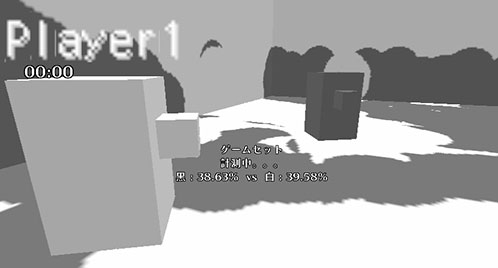
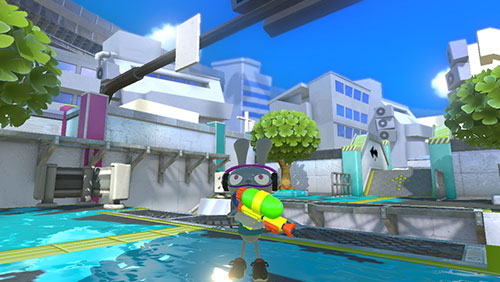
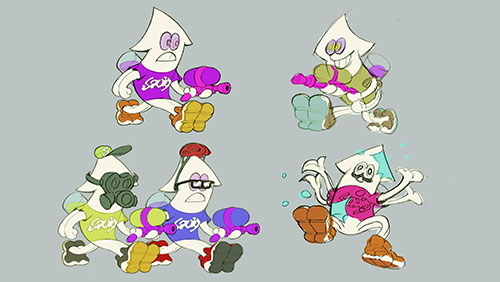
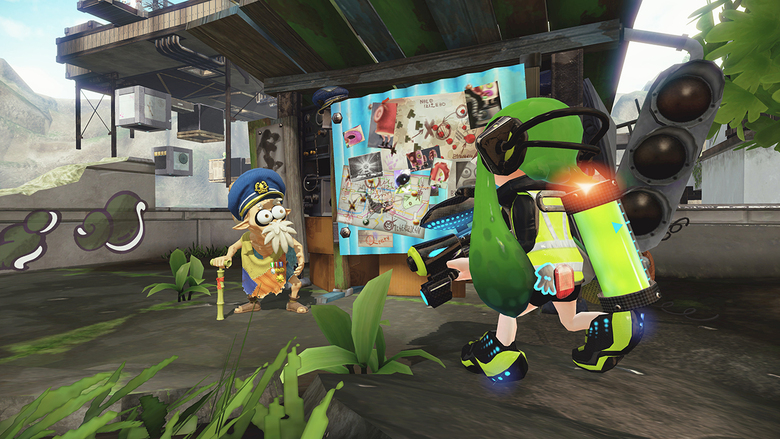
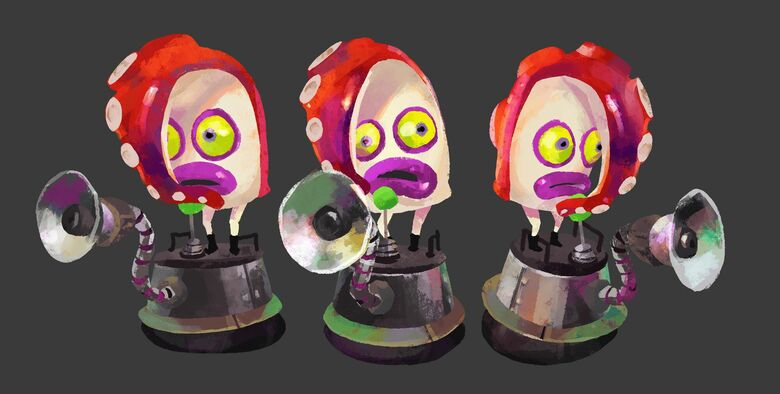
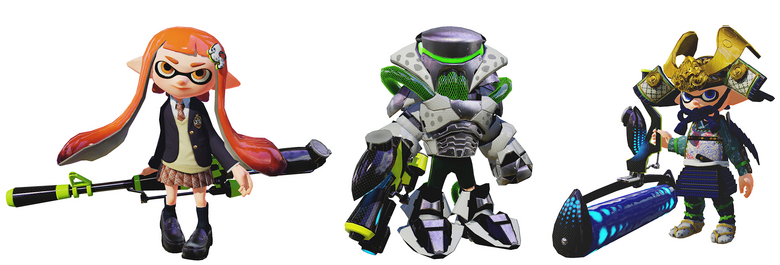
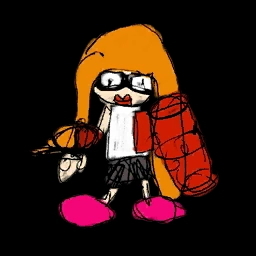
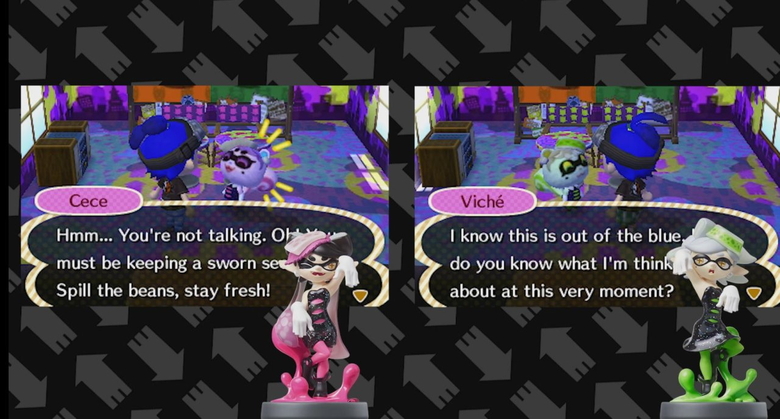
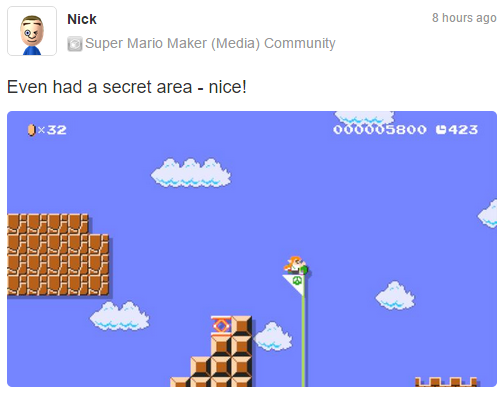
Comments (4)